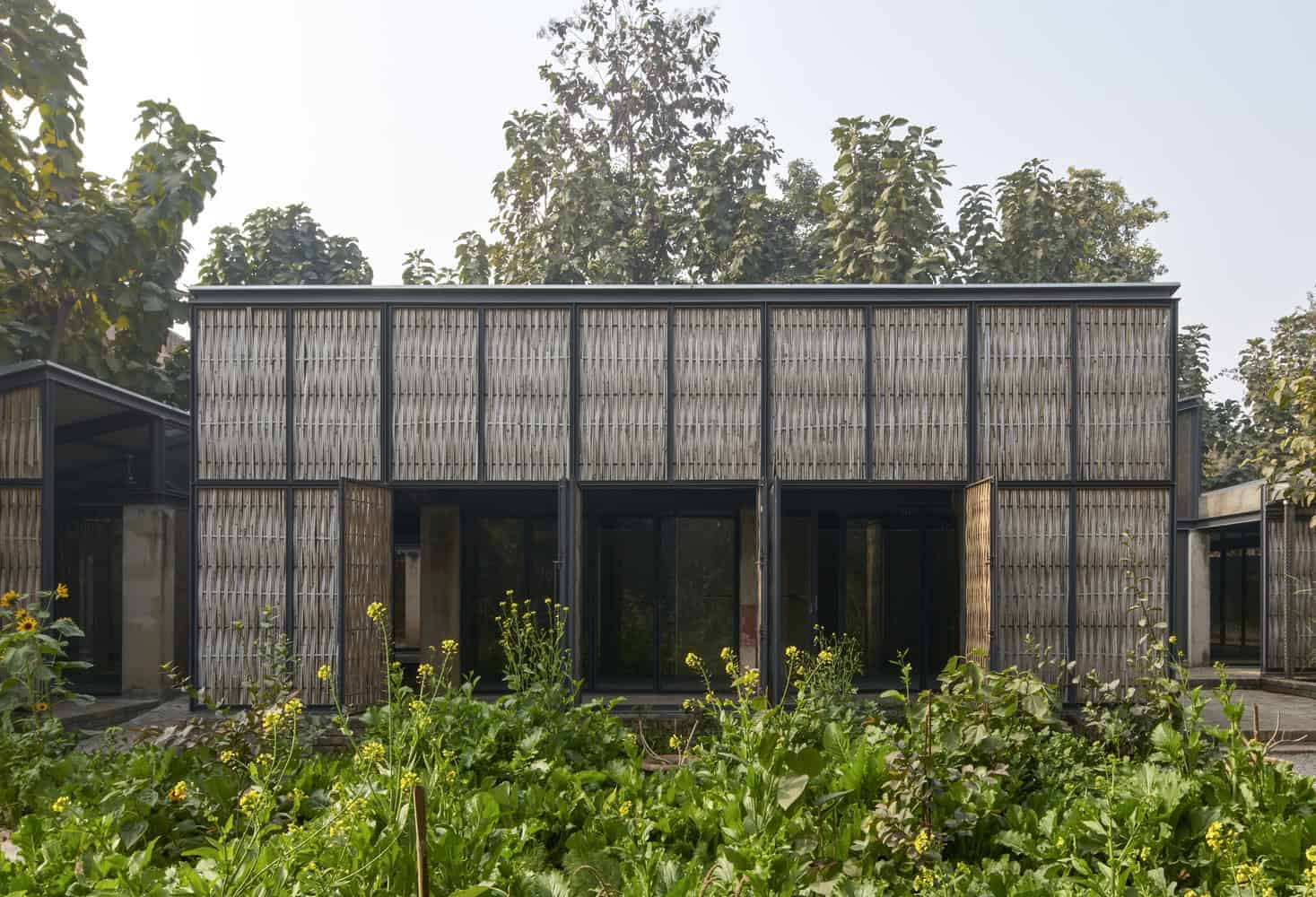
- Project: Artist Residency Farm8
- Architect: Studio Array
- Location: India, Arjanghar, New Delhi
- Year: 2023
- Area: 600 m2
- Photography: Edmund Sumner
A Sanctuary for Creativity in the Heart of Delhi
In the dense urban fabric of New Delhi lies a 5-acre oasis: Farm8, conceived as a creative retreat where art, architecture and nature converge. Designed by Studio Array, the Artist Residency Farm8 is a deliberately humble, highly considered intervention. It emerges not as a stand-alone monument, but as a subtle, woven extension of existing infrastructure, aligned with a larger vision of ecological stewardship, permaculture and artistic immersion.
What begins with an abandoned foundation and a half-built shell evolves into a fluid set of spaces that blur inside and outside, private and public, structure and landscape. The architects embraced the existing column grid, wrapping it with lightweight steel, glass and bamboo screens, creating a symbiotic relationship between what was already there and what is newly built.
Concept & Site Strategy
The original brief was simple: a studio for artists Ranbir and Rashmi Kaleka. The unexpected awakening of purpose transformed the site into a communal creative ecosystem—with sustainable farming and permaculture at its core. The site’s previous foundations were repurposed, minimizing waste and retaining context.
Rather than imposing a closed building, the architecture opens to its surroundings: semi-open verandahs, modular sloping roofs, and bamboo screening create thresholds that feel as much part of the orchard as the architecture itself. The roof becomes a gesture—tilted to frame light, shade and the sky, to “elevate” the experience of nature beyond the built form.
Materiality, Form & Atmosphere
A refined material palette underscores the project’s dual nature: resilient yet lightweight, humble yet intentional. Steel framework supports soaring glass façades; bamboo weave panels filter light and shade; concrete stumps, older structural elements, remain visible as part of the story.
The layering creates a tactile, visual richness: shadows cast through bamboo; reflections in glass; the cool sturdiness of concrete meeting the warmth of wooden decks and greenery. Inside and out dissolve. The experience is immersive, calm, inspiring.
Spatial Experience & Living Logic
Artists arriving here find spaces that are neither fixed nor restrictive, but open to interpretation. The modular blocks, double-height volumes, semi-open verandahs give residents freedom to create, experiment and retreat. The scale changes—from intimate alcoves to airy communal halls—allow for both solitude and collaboration.
Daylight penetrates deeply, ventilation flows naturally, the landscape wraps the built form. The architecture facilitates creative life rather than dictating it.
Significance & Why This Project Matters
-
Adaptive reuse and minimal waste: Retaining existing structural elements rather than wiping the slate clean communicates maturity in design approach.
-
Integration of art, ecology and architecture: This is more than a building—it is a living ecosystem where artists, farming and craft coexist.
-
Blurring categories: The boundaries between studio, residence, gallery and garden are soft, fostering a unique spatial narrative.
-
Architectural humility with depth: The building does not shout—it whispers. Yet whispering architecture often echoes louder.
Artist Residency Farm8 is a model of how architecture can be thoughtfully inserted into urban-agricultural contexts, how reuse can be design, how creativity can live in landscape rather than urban cage.